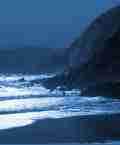 |
Search the site:

 [from the Appletree Press title John McNally - Boxing's Forgotten Hero published by Appletree Press]
[from the Appletree Press title John McNally - Boxing's Forgotten Hero published by Appletree Press]
BOXING AS A WAY OF LIFE“I was too stubborn in fights. I was always getting the worst, so when a friend of mine called Patsy Monaghan suggested that we join the boxing club I just jumped at the chance,” recalled John. “On my first evening at the club the trainer Tommy Madine put the gloves on Patsy and me, and put us in the ring where we just went for it. It was a tremendous release, and Tommy was eyeing us to see if we had any natural talent. I was hooked and began to take the game seriously and trained religiously every night. Boxing was a great escape for me at the time. I was young and the death of my mother was still hurting, but I began to concentrate on the boxing as a means of coping. My grandmother Rose had become a second mother to me, and she was to mentor me throughout my career.”Within a few months, John came under the tutelage of a trainer called Willie Holden who was, to say the least, a hard taskmaster. Holden was a perfectionist whose style was demanding on the young pugilists. He drove the boys to the extreme, and his exacting methods sometimes were resented by the boxers. One of his habits was to call up to the boys’ houses and ridicule those who chose to stay at home doing schoolwork, as opposed to attending the club. The standards set by Holden had an immediate effect however, and, in 1946, John qualified for the Ulster final of the 5 stone 7lb juvenile class. His opponent in the Ulster Hall that evening was a boxer by the name of Paddy Graham, who would go on to carve out an impeccable career in the ring. The fight that night was a battle from the first to the last bell and Graham was adjudged to be the winner. Undeterred, John decided to enter the all-Ireland championships where the prospect of an early rematch with Graham was on the cards. As it turned out, the Ulster champion was beaten in the quarter-final by an up-and-coming prospect called ‘Spike’ McCormick and John was to claim the national title by then defeating Holy Family’s Louis Watson. As the Immaculata’s first Irish champion, John became a local star and other advantages were soon to come his way. Gerry and Joe Baker were brothers who were involved in the running of the Immaculata club. They held a bit of sway in the community and one evening they called to see John, who was recuperating at home after having his tonsils removed. At that stage, John was still a pupil at St Comgall’s school and the brothers suggested that his education could benefit if they could arrange a transfer of the Christian Brothers’ school in Hardinge Street, which they could organise. Such a transfer offered John a curriculum which included science, metalwork, English, maths, a language and, of course, religion. As expected, he jumped at the chance to move to Hardinge Street, where Brothers McGuinness, Dwane and Burgess amongst others, began to hone John’s academic skills. One of the biggest events to have occurred in the Falls Road took place in 1946 when the film crews descended en masse to film parts of the Carol Reed epic Odd Man Out. The film starred James Mason, as a character called Johnny McQueen who was trying to escape from the police after a badly organised bank robbery. For boys in the area the excitement surrounding the movie only reinforced ambitions of travel and fame. At this stage, John McNally was dedicating himself to his flourishing boxing career. However, he had left the Immaculata and moved to the St Mary’s club in nearby King Street as a disagreement occurred in the Devonshire Street club. At the centre of the dispute was trainer Willie Holden: he left the club and took with him a number of the better prospects, including John McNally. The Immaculata were none too pleased to lose their star boxers. The Ulster Council was called in to mediate in the dispute, but John McNally would never return to the Immaculata. The St Mary’s club honed John’s skills further and he went from strength to strength, becoming quite a draw at local shows. “Willie Holden always said that I was a natural boxer and I suppose I stayed with him as he had brought me so far. I recall that we were boxing twice, sometimes three times, on a Sunday night at various clubs across Belfast,” John recalled. “We started off at the Immaculata and all the boys were given an ice-cream from the local parlour for taking part, which was a big treat back then. We then ran to the St George’s club for another scrap, and they would have lemonade on offer. However, the biggest treat for me came at St Mary’s, when we would be rewarded with apple pie that had been baked by my sisters. The fact was that these treats were the best thing you could have given the boys as, let’s face it, we were always hungry and you can’t eat medals for supper.” Read the concluding part of this Chapter : here Read the previous Chapter : here
From the Appletree Press title: John McNally - Boxing's Forgotten Hero by Barry Flynn. |
[ Back to Top ]
All Material © 1999-2009 Irelandseye.com and contributors
